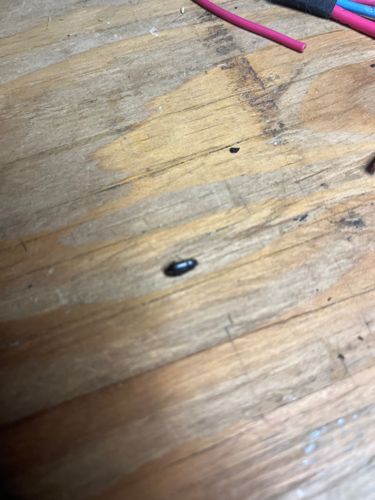Carpet Beetle
Scientific Name: Dermestes lardarius (Larder beetle) or Anthrenus verbasci (Varied carpet beetle) or related species (based on the image, it is difficult to determine the exact species, but it appears to be a type of dermestid beetle which includes carpet beetles or larder beetles)
Order & Family: Coleoptera, Dermestidae
Size: Larvae typically range from 2-5 mm in length. Adults are small, usually 2-4 mm, and oval-shaped. The one in the image appears to be a larva or a very small adult, likely in the 2-4 mm range.

Natural Habitat
Indoors, larvae are found in dark, undisturbed areas like closets, attics, under furniture, along baseboards, and in air ducts, particularly where lint, pet hair, or woolen items accumulate. Outdoors, adults are common on flowering plants.
Diet & Feeding
Larvae feed on natural fibers such as wool, silk, fur, feathers, and dried animal products (e.g., dead insects, pet food, leather, museum specimens). Adult carpet beetles primarily feed on pollen and nectar from flowers outdoors.
Behavior Patterns
Carpet beetle larvae typically avoid light and prefer dark, undisturbed areas. They are slow-moving and will curl up or play dead when disturbed. Adult carpet beetles are attracted to light and are often found near windows. Their lifecycle involves complete metamorphosis, from egg to larva to pupa to adult. The larval stage is the most damaging.
Risks & Benefits
Risks include significant damage to natural fiber products, clothing, carpets, and stored foods. Some people may also experience skin irritation or allergic reactions from bristles shed by the larvae. There are no direct benefits to humans, but adult carpet beetles can act as pollinators in outdoor environments.
Identified on: 8/16/2025